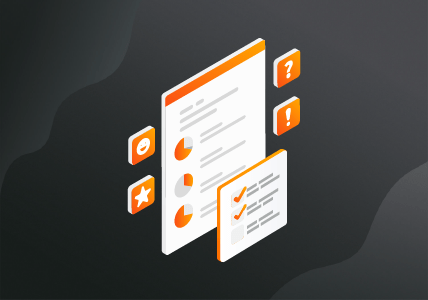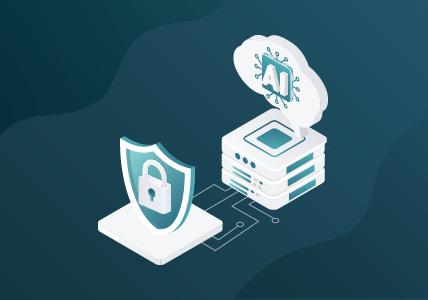14 Network Security Tools and Techniques to Know
It is predicted that by 2021, cybercrime damages will amount to an annual total world cost of $6 trillion,1 even outpacing the yearly cost of damages attributed to natural disasters. And on an individual company level, these damages can be just as catastrophic. The average cost of a cyberattack is currently $1.67 million.2 Along with a cybersecurity attack comes operational and productivity loss, negative customer experience, and more.
Fortunately, through network security tools and techniques, you can defend your network against cybercrime and inefficiencies.
- What Is Network Security?
- Essential Network Security Tools and Techniques
- Network Security Tools FAQs
- Wrapping Up
What Is Network Security?
Network security is the defense you use to protect yourself against ever-increasing cybercrime. Network security tools monitor, prevent, and respond to unauthorized network intrusion while also protecting digital assets, including network traffic. Network security includes hardware and software technologies to respond to the full range of potential threats targeting your network.
Three Key Focuses of Network Security
Network security functions are based on three key security components: protection, detection, and response.
- Protection: The security tools and policies designed to prevent network security intrusion
- Detection: The resources that enable you to analyze network traffic and quickly identify potential threats before they do harm
- Response: The ability to react to confirmed network security threats and resolve them as quickly as possible
Together, these three components offer a strong defense against various cyber threats.
Essential Network Security Tools and Techniques
To keep your business safe, it’s essential to have a system in place that can protect, identify, and respond to a range of attacks. A complete network security arsenal offers a range of tools and techniques to do so. When combined, the following network security tools can provide comprehensive protection to keep your network safe from a range of cyber threats.
1. Access control
In order to attack your network, a cybercriminal must first access it. Your first defense against cyberattacks is limitations on access. With access control, you’ll have precise power over which users can access your data and which parts of your network they can access.
Gigamon offers role-based access control that enables you to control the access privileges of users and restrict them from modifying or viewing unauthorized data. Define access by both individual users and groups of users for easy oversight.
2. Anti-malware software
Malware, in the form of viruses, Trojans, worms, keyloggers, spyware, and so on, is designed to spread through computer systems and infect networks. Anti-malware tools identify dangerous programs and prevent them from spreading. In the event that malware software breaches your system, many also help resolve malware infections and minimize the damage to the network.
Trend Micro, one of our technology partners, offers complete defense against advanced persistent threats (ATPs). TrendMicro detects and analyzes ATPs and targeted attacks, rapidly adapting their response to provide tailored protection. Enjoy benefits like global threat intelligence and specialized tools to secure your network.
3. Anomaly detection
It can be difficult to identify anomalies in your network without a baseline understanding of how that network should be operating. Network anomaly detection engines (ADE) do the hard work for you. They offer a thorough understanding of your network so that when breaches occur, you’ll be alerted to them quickly enough to respond.
Together, LogRhythm and Gigamon’s network security tools detect and respond to emerging threats. The two prioritize and neutralize damaging cyber threats from both outside the network and within.
4. Application security
Applications are a vulnerability that can be easily exploited by attackers. Application security tools identify and repair any security issues or vulnerabilities in your vital software. With application security, the sensitive data within your software will be well protected.
Gigamon Application Intelligence offers NetOps, CloudOps, and security teams complete visibility into your various applications. With this network security tool, you’ll keep a tight handle on your roster of necessary applications.
5. Data loss prevention (DLP)
Often, the weakest link in network security is the human element. DLP technologies and policies help protect staff and other users from misusing and possibly compromising or releasing sensitive data to sources outside of the network.
Through GigaSMART® Inline TLS/SSL, Gigamon now offers an Internet Content Adaptation Protocol (ICAP) with data loss prevention tools to protect your team from accidentally or intentionally exposing important data.
6. Email security
As with DLP, email security is focused on shoring up human-related security weaknesses. Via phishing strategies (which are often very complex and convincing), attackers persuade email recipients to share sensitive information via desktop or mobile device, or inadvertently download malware into the targeted network. Email security helps identify dangerous emails and can also be used to block attacks and prevent the exposure of vital data.
Our technology partner, Trend Micro, features email security tools used to prevent and respond to targeted email attacks.
7. Endpoint security
In today’s world, many use their personal devices for business use, exposing both devices and the network to potential attack. Endpoint security adds a layer of defense between remote devices and business networks to minimize and neutralize threats.
Thanks to a partnership with CrowdStrike, Gigamon offers endpoint security with real-time indicators of attack and threat intelligence, resulting in hyper-accurate protection of your phone, computer, and other devices.
8. Firewall protection
Firewalls function much like gates that can be used to secure the borders between your network and the internet. They’re used to manage network traffic, allowing authorized traffic through while blocking access to non-authorized traffic. Firewalls can also protect against insider threats and attacks from malicious software.
Gigamon’s Deep Observability Pipeline works with Fortinet Security Fabric to inspect, secure, and optimize network traffic without limiting the speed or capacity of network operations.
9. Intrusion prevention systems
Intrusion prevention systems constantly scan and analyze network traffic/packets to identify and quickly respond to attacks. These systems often keep a database of known attack methods, enabling the tool to recognize and respond to threats immediately. Intrusion prevention systems combine the identification capabilities of an intrusion detection system with the ability to prevent attacks from occurring, for complete protection against intrusion.
Gigamon works with a wealth of threat management tools and technology partners to combine their powers and limit vulnerabilities for deep visibility and superior protection.
10. Network segmentation
Similar to access control’s ability to assign specific permissions to certain users, network segmentation enables you to assign specific permissions to certain groups of network traffic. Through network segmentation, you can divide your overall network into smaller segments and give permissions accordingly. This can help eliminate sensitive data’s transmission from one part of your network to another, potentially putting the entire network at risk.
Gigamon offers smart segmentation and selective traffic routing to tools, allowing you increased visibility into your network.
11. Security information and event management (SIEM)
With your wealth of cybersecurity tools, you’ll be left with a lot of information. Security information and event management collects, aggregates, and analyzes all this data into a single, easy-to-use resource, allowing you increased visibility into potential security threats.
Along with partners Corelight, IBM security, and LogRhythm, Gigamon offers a robust SIEM for easy data analysis.
12. Virtual private network (VPN)
VPN security tools are used to authenticate communication between secure networks and an endpoint device. Remote-access VPNs generally use IPsec or Secure Sockets Layer (SSL) for authentication, creating an encrypted line to block other parties from eavesdropping.
13. Web security
Including security tools, hardware, policies, and more, web security is a blanket term to describe the network security measures that ensure safe web use when connected to an internal network. This helps prevent web-based threats from using browsers as access points to get into the network.
Gigamon pairs with Zscaler to offer web security to all users, on or off your business network.
14. Wireless security
Wi-Fi presents another potential weak point for security. Wireless network security protects data transmitted via Wi-Fi by allowing only authorized devices to access the information. This process is typically done via WPA and WPA2.
Network Security Tools FAQs
What are the three types of network security tools?
Network security tools generally fall into three main categories: protection, detection, and response. Protection prevents your network from intrusion, detection analyzes potential threats, and response resolves network security threats quickly and effectively.
What is the most effective tool for network security?
There’s no one-size-fits-all solution when it comes to network security tools. For a secure and protected network, it’s vital to have a combination of network security tools according to your business’s specific needs. Gigamon collaborates with a range of different external technology partners to offer complete protection for your business.
What is the number one cybersecurity threat?
Depending on your organization, there are a wealth of cybersecurity attacks that you may be exposed to. Cyber threats may come in the form of malware, social engineering, insider threats, ransomware, supply chain attacks, and many other attempts to compromise your most vital data.
Wrapping Up
As a business owner, many rely on you to protect your network: employees, customers, partners, stakeholders, and more. It’s vital to find a resource that offers holistic protection, smart detection, and effective response. With Gigamon, you’ll reap the benefits of not just our internal tools, but our wealth of partner technologies. Together, we eliminate blind spots and help you build a Zero Trust architecture your stakeholders can count on. Schedule a free demo today.
Featured Webinars
Hear from our experts on the latest trends and best practices to optimize your network visibility and analysis.

CONTINUE THE DISCUSSION
People are talking about this in the Gigamon Community’s Security group.
Share your thoughts today
References
- Morgan, Steve. “Global Cybercrime Damages Predicted to Reach $6 Trillion Annually by 2021.” Cybercrime Magazine. Dec. 7, 2018. https://cybersecurityventures.com/cybercrime-damages-6-trillion-by-2021/.
- Truta, Filip, Paul Vallee, Bill Ho, Roy Horev, Richi Jennings, and Michael Vizard. “Average Cost of a Cyberattack Now Exceeds $1 Million, Research Shows.” Security Boulevard. January 17, 2019. https://securityboulevard.com/2019/01/average-cost-of-a-cyberattack-now-exceeds-1-million-research-shows/.








 Dan Daniels
Dan Daniels